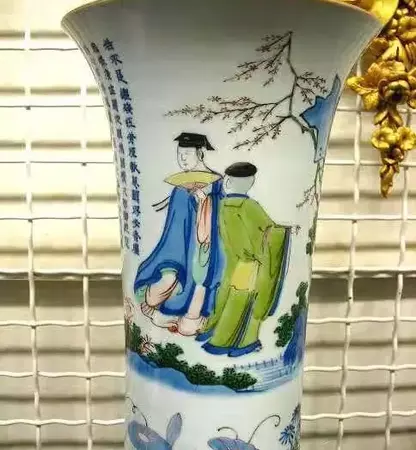Editor: The Peony Pavilion is a famous play written by Tang Xianzu in Ming Dynasty. There are very few figural paintings depicting this play on Kangxi famille verte porcelain. Dr Yibin Ni first identified the figures and the scene on a porcelain dish in the V&A Museum at the turn of the millennium, and now is discussing a couple of incorrect details in the description of the scene in their online catalogue.
featured image above: porcelain dish with overglaze enamelled decoration (detail), Kangxi period (1662-1722), courtesy of the Victoria and Albert Museum, London
‘True love conquers all’ is the theme of the Peony Pavilion (牡丹亭 Mudan Ting), a musical play of fifty-five scenes written by Tang Xianzu (汤显祖, 1550-1616), a contemporary of William Shakespeare (1564-1616). Also known as The Romance of Return of Soul (还魂记 Huanhun Ji), the play contains a supernatural love story between Du Liniang (杜丽娘), the only daughter of the Nan’an prefect (南安太守) Mr. Du, and Liu Mengmei (柳梦梅), a civil-service examination candidate. At the beginning of the play, there was a passionate rendezvous of the two in the form of Liniang’s dream in the back garden with vigorously budding bushes during a warm spring afternoon. The encounter was so indelible to the adolescent girl that she eventually died of longing for her ‘dream’ lover. The play narrates how the couple overcome all the obstacles along the way to their union. Their experiences transcend not only time and space but also life and death.

The Victoria and Albert Museum, London, has a Kangxi famille verte plate in the collection, one of the only two known extant Kangxi famille verte plates with scenes from The Peony Pavilion in the world. The other, bearing the scene of Act 26, Admiring the Portrait, is in the collection of the Museum of Far Eastern Antiquities, Stockholm, Sweden. The two may well have belonged to the same set since their colour palette and diameters are very close.

In a photographed page probably from an old catalogue in the V&A’s object database, the scene on the V&A plate is merely labelled as ‘porcelain painted in famille verte enamels’. In the Chinese version ‘Qing Dynasty Ceramics in the Victoria and Albert Museum (英国维多利亚和阿尔伯特国立博物院藏中国清代瓷器)’ (1997), originally published as a V&A publication, this plate is described as ‘康熙五彩人物图盘’, literally, ‘Kangxi five-colour figure painting plate’, albeit indicating a theatrical setting but with no identification of the specific story scene.
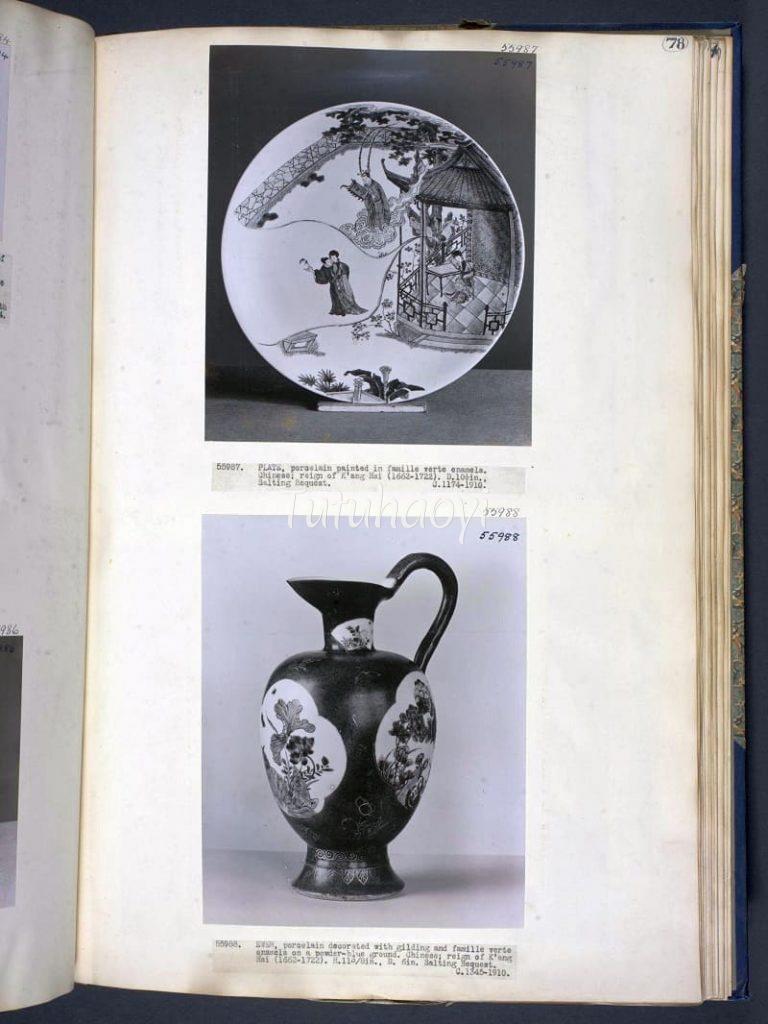

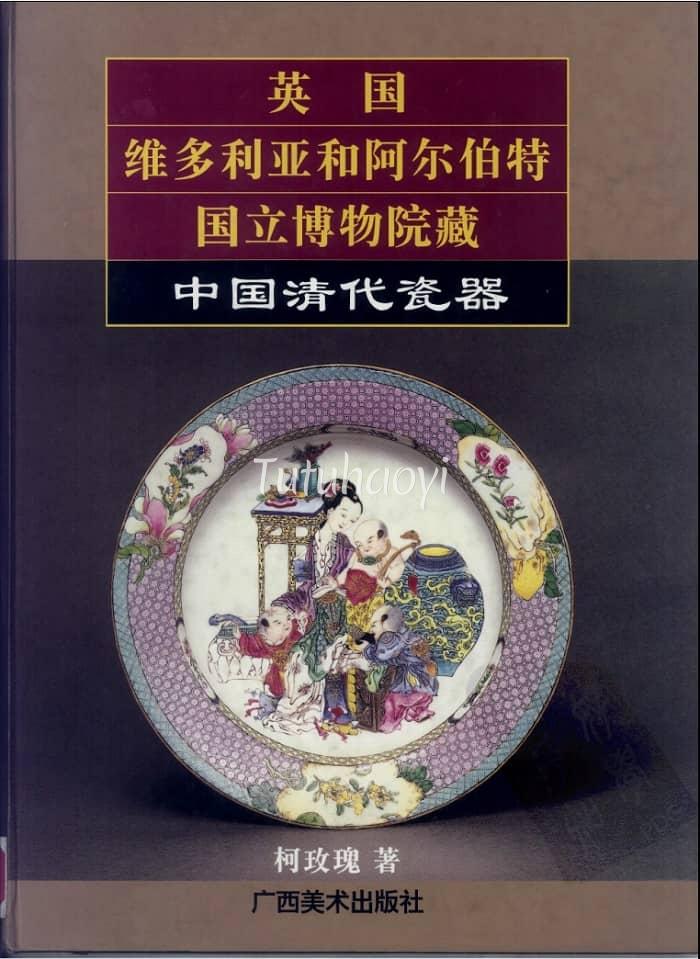
I published my research result on this plate in an article in the March issue of the Chinese journal Art World (《艺术世界》) in 2004 and then an expanded version was included as a chapter in my book Kan Tu Shuo Ci (《看图说瓷》, Interpreting Narrative Scenes on Traditional Chinese Decorative Arts, 2008, Beijing). I identified the scene on this plate as that of ‘A Startled Dream While Visiting the Family Garden’, Act 5 of the play ‘The Peony Pavilion’.
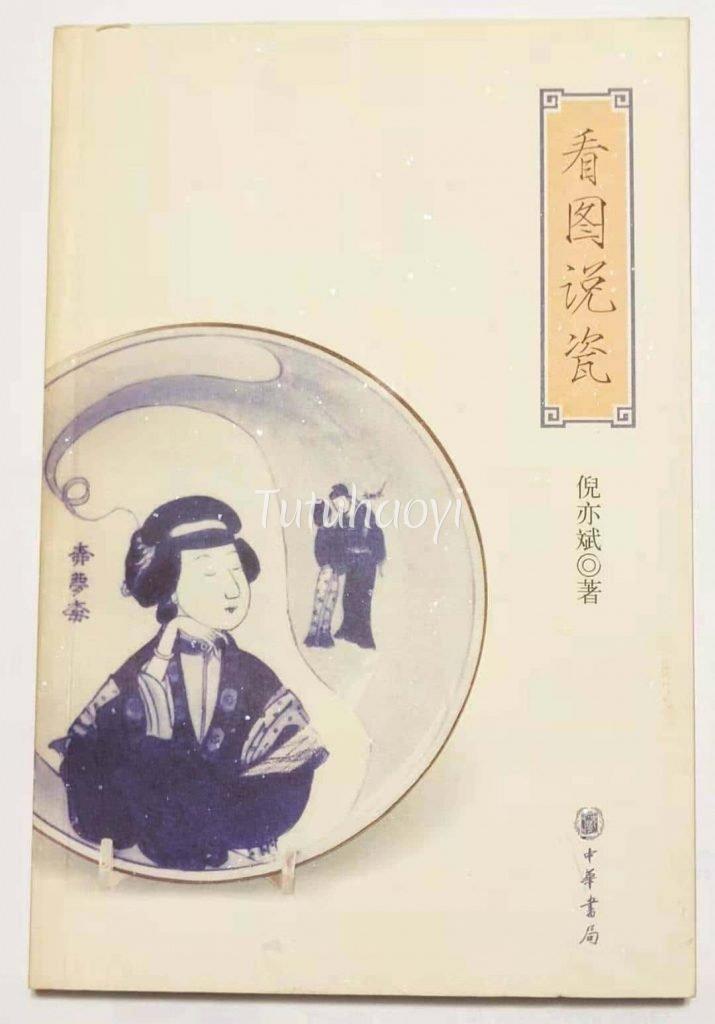
In the current V&A online catalogue, there is a paragraph explaining the content of the scene on the plate and this is a progress on the part of the V&A museum compared with a few words given to the plate in the previous archived data sheet or publication.
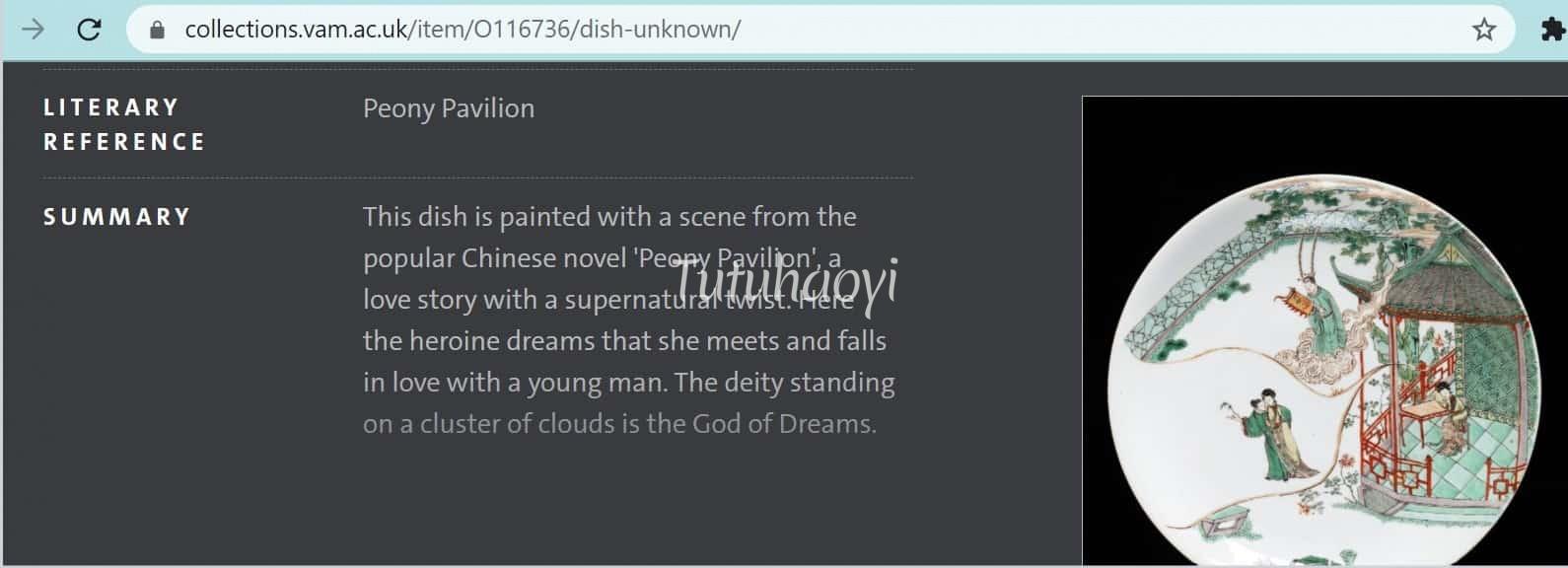
However, in this paragraph, the plate is said to be “painted with a scene from the popular Chinese novel ‘Peony Pavilion’”. As, 1616: Shakespeare and Tang Xianzu’s China, the title of a book published in 2016 shows, the creator of the Peony Pavilion is definitely a playwright. If Tang were to have been a novelist, he would have been compared to Charles Dickens, instead of William Shakespeare.

Furthermore, the online catalogue paragraph contains the statement that ‘The deity standing on a cluster of clouds is the God of Dreams’. This is inconsistent with the content of the original play. In fact, there is not such a role as ‘the God of Dreams’ in the text of Act 5 of the play. Instead, there is a Flower Spirit, who protects and sends blessing to the romance between Du Liniang and Liu Mengmei. His image appears in a Ming-dynasty woodblock printed illustration of Act 23 of the play, The Nether Judge (冥判).


In that act, the Flower Spirit of Mr Du’s Back Garden (后花园花神) was summoned in front of the Judge of the underworld to testify and the spirit is pictorially characterised as a handsome prince-like figure flying on a piece of cloud. And so is he hovering in mid-air in the scene on the V&A plate.
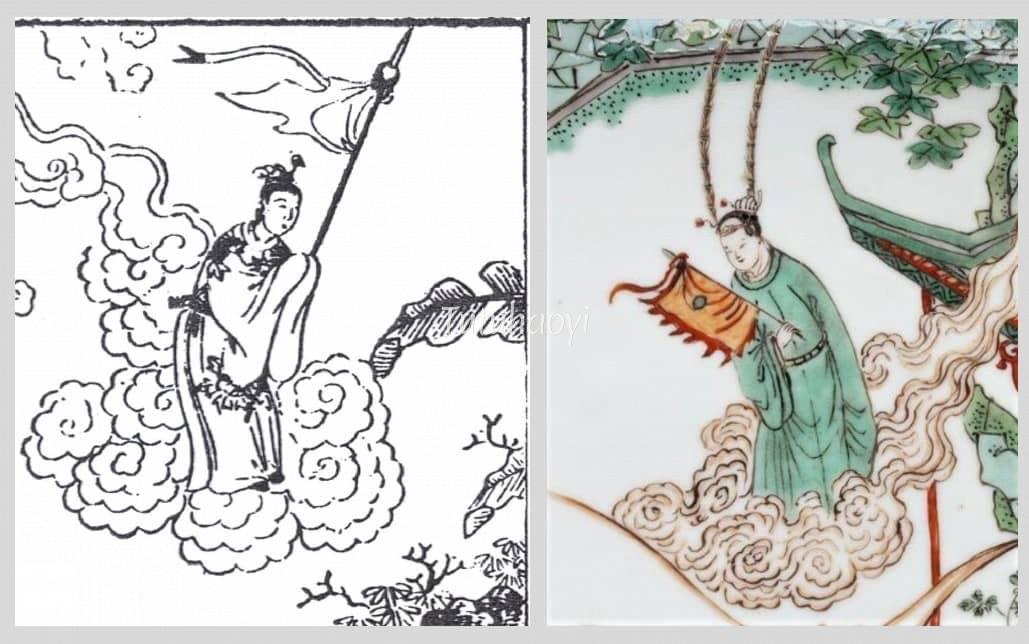
References:
- 倪亦斌:《明末时尚女子的情色告白》,《艺术世界》, 上海: 上海文艺出版社, 2004 – 03, pp.72-73.
- 倪亦斌:《明末时尚女子的情色告白》,《看图说瓷》, 北京: 中华书局, 2008, pp.1-10.
*The book Kan Tu Shuo Ci 《看图说瓷》 is also available for loan at the Princeton University library (checked on 21 July 2021).







